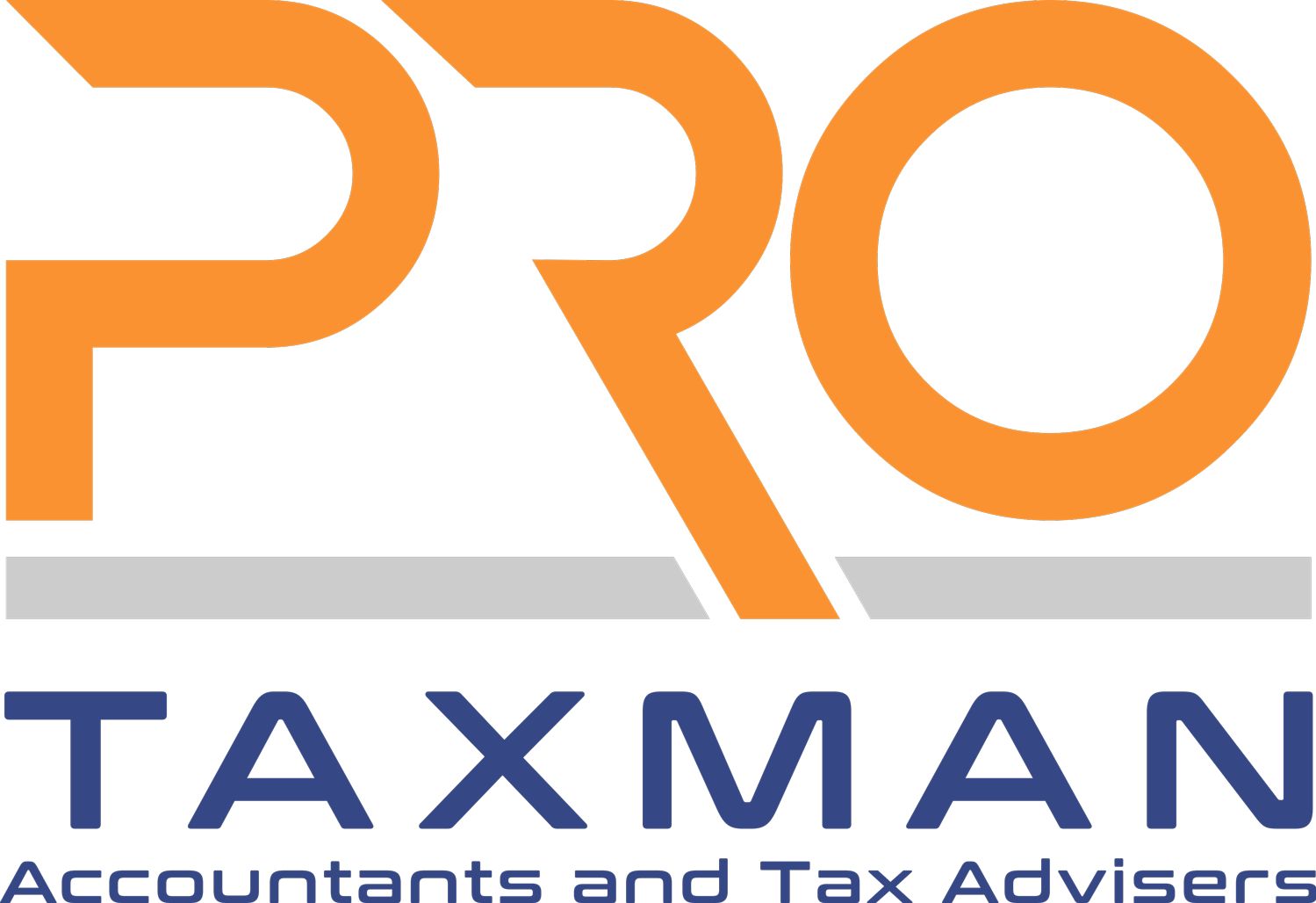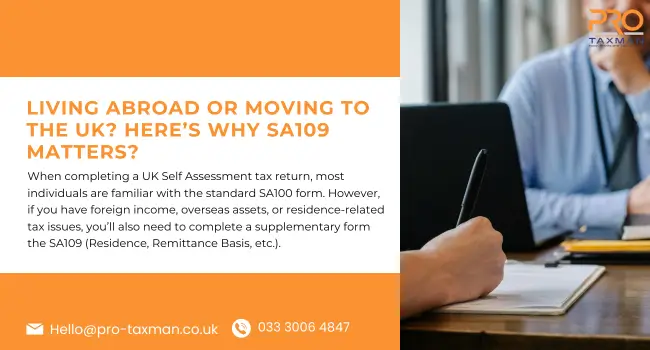What is an SA109 Form in the UK?
When completing a UK Self Assessment tax return, most individuals are familiar with the standard SA100 form. However, if you have foreign income, overseas assets, or residence-related tax issues, you’ll also need to complete a supplementary form the SA109 (Residence, Remittance Basis, etc.).
This form helps HMRC determine your UK tax residence status and how your worldwide income should be taxed.
Who Needs to Complete an SA109 Form?
You may need to file SA109 if any of the following apply:
- You qualify as a non-resident for UK tax purposes.
- You are a UK resident but claim the remittance basis (choosing to pay tax only on income brought into the UK).
- You’ve arrived in or left the UK during the tax year.
- You are claiming split-year treatment (your tax year is split into UK-resident and non-resident parts).
- You are claiming double taxation relief under a tax treaty.
Key Information Included in SA109
The SA109 form typically asks for details about:
- Residence status whether you are UK resident, non-resident, or dual-resident.
- Days spent in the UK as part of the Statutory Residence Test.
- Domicile and whether you are claiming the remittance basis.
- Double taxation agreements and claims.
Why is SA109 Important?
Filing SA109 correctly ensures you:
- Pay the right amount of tax on UK and overseas income.
- Avoid double taxation if you have income taxed abroad.
- Protect your eligibility for reliefs and allowances.
Mistakes or omissions could lead to incorrect tax bills or HMRC inquiries.
How to File an SA109 Form
- SA109 must be submitted as part of your Self Assessment tax return (by 31st January following the end of the tax year).
- HMRC’s online system does not support SA109 directly — you must either: Use commercial tax software, or File a paper tax return (deadline: 31st October).
FAQs on SA109 Form
1. What is the SA109 form?
The SA109 is a supplementary form to the Self Assessment tax return. It is used to declare your residence status, remittance basis claim, and any double taxation treaty relief.
2. When should I complete SA109?
You need to complete it if you are non-resident, claiming the remittance basis, requesting split-year treatment, or applying double tax relief.
3. What is the form for non-residents of HMRC?
For non-residents, SA109 is the key form to confirm your UK tax residency status and ensure you’re taxed correctly only on your UK income.
4. How do I inform HMRC of leaving the UK?
You can inform HMRC by completing the P85 form when you leave the UK. If you still need to file a tax return, you’ll also complete SA109 to declare your residence status.
5. Can I fill in the SA109 form online?
No, HMRC’s free online system does not support SA109. You must either file on paper or use commercial Self Assessment software.
6. Do non-residents need to complete a UK tax return?
Yes, if you receive taxable UK income (such as rental income, pensions, or employment income), you may still need to file a Self Assessment return along with SA109.
7. Where can I download the SA109 form?
You can download the official SA109 form (Residence, remittance basis, etc.) from the HMRC website.
Final Thoughts
The SA109 form is crucial if your tax affairs involve residence and overseas income. While it may look complex, completing it accurately ensures you only pay what’s due and benefit from available reliefs. If you’re unsure, consider getting advice from a qualified tax adviser especially if you have significant foreign income or complex residency status.

